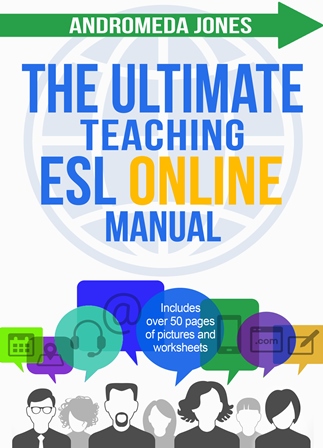A beginner TEFL lesson plan for a class of 6-10 adult students. Exercise from The Ultimate ESL Teaching Manual.
Class duration: 90 minutes
Learning objectives: Grammar: ‘to be’ verb and prepositions of place
Homework: Write 20 sentences with ‘it is’, ‘’they are,’ ‘I am,’ ‘you are.’ Include interrogatives and negatives
Example TEFL Lesson Plan: ‘to be’ + prepositions of place
| 10.00 | Warmer: Place 10 classroom objects on the table. Elicit from students their names. Write them on the board. |
| 10.10 | ‘To be.’ Go through the ‘to be’ drill for ‘it is a’ and ‘they are’ + objects on the table. In time include, interrogative and negative (see instructions below). Give plenty of time for this exercise. |
| 10.30 | Introduce ‘I am’ and ‘you are.’ Go through ‘I am,’ you are’ drill with adjectives. Introduce adjectives such as: ‘British, American, Italian (or students’ nationalities), happy, sad, interested, busy, tired. Introduce interrogative, negative. |
| 10.45 | I am / you are + a/an + noun. Introduce words: ‘teacher,’ ‘student,’ ‘man,’ woman.’ Go through interrogatives and negatives. |
| 10.55 | Prepositions of place. Go back to the objects on the table. Take one (say, a pen) and place it on a book. Ask, ‘where is the pen?’ Elicit that it is on the book, in the book, next to the book, behind the book, in front of the book, under the book. Go through this with other objects. Include plurals. Ask students to ask each other using ‘where…?’. For example: Student 1:Where are the pencils? Student 2: The pencils are next to the plant. |
| 11.15 | Return to ‘I am,’ ‘you are’ drill to reinforce |
| 11.20 | Finisher: Days of the week. Go around the class and get each person to say a day of the week. Once they have got it, teach ‘before’ and ‘after,’ by asking ‘and the day before?’ (make gesture indicating the past), and ‘and the day after? (make gesture indicating future). |
| 11.28 | Give homework and congratulate them on their first class. |
INSTRUCTIONS: HOW TO TEACH ‘TO BE’ DRILL
Step one: Place classroom objects on the table and go through names. Each time say, ‘it is a …’
Step two: Next, highlight that, ‘it is’ is contracted to, ‘it’s’. Ask your students to name the objects themselves using ‘it’s a….’. For example, ‘it is a phone,’ ‘it is a plant.’
Step three: Start asking questions. Reinforce the structure of the interrogative form (to be and subject pronoun reverses) by writing questions on the board and crossing your hands over themselves as you ask them.
First ask questions that are true. For example, point to the cell phone and ask, ‘is it a phone?’ Elicit, ‘yes, it’s a phone.’
Next ask questions that are not true. For example, point to the pencil and ask, ‘is it a plant?’
Your student will answer, ‘no.’
Write the negative answer on the board: ‘No, it’s not a plant.’ Ask them to repeat what you have said.
Ask the student another question that is not true and get them to answer with a full negative sentence. Continue this until your students are happy answering in affirmative and negative.
Step four: Make a questioning gesture and say, ‘ask me,’ or, if they don’t understand, ‘question me.’ Using the correct question form, your students should be able to ask questions like, ‘Is it a pencil?’ With a gesture, get another student to answer for you.
Step five: If your students are making good progress, start using the interrogative pronoun ‘what’ and ask, ‘what is this?’ rather than, ‘is it…?’
Ask your students to ask each other their own questions using ‘what..?’
Step six: If everything is going really well, next, start naming plural nouns and introduce ‘they’. For example, ‘they are pencils, or, ‘they are keys.’
Step seven: Repeat the process, now with plural nouns by pointing to different objects and asking questions; some which are true and some which are false. With a false question, elicit the response ‘no, they are not keys.’ Next ask, ‘what are they?’ and elicit an answer. Finally get your students to ask each other about different objects.
Step eight: Continue this with ‘I am.’ Point to yourself and say ‘I am American,’ (if this is true for you). Ask your students to do the same with their nationalities. Highlight the contraction ‘I’m’ on the board and model the sentence ‘I’m American.’ Ask your students to do the same.
Step nine: Next, say, ‘I’m not French,’ highlighting the negative. Ask students one by one, ‘Are you French?’ (or whatever will elicit a negative response from them). Highlight the interrogative form ‘are you…?’ on the board and get your students to ask each other. Brainstorm names of nationalities from your students and write them on the board. Practice the interrogative and negative form of the verb.





